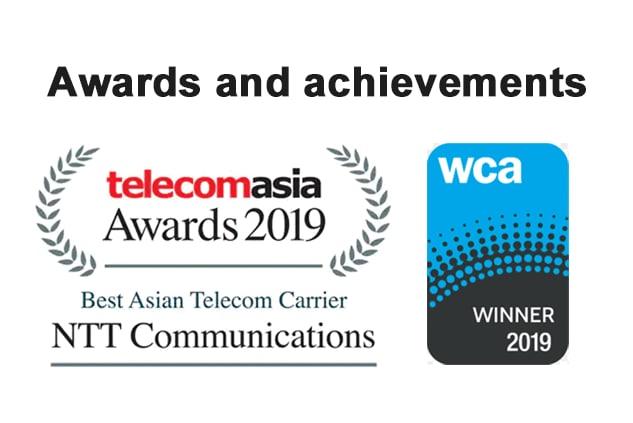Cookies and Web Beacons
NTT Communications uses cookies and web beacons on some pages on its official website.
Cookies are information passed between each user’s browser and web server to enable websites to identify particular users. Web beacons are small graphic data, also known as clear GIFs, that recognize user activity, such as if and how often a user has visited a website.
Cookies and web beacons make it easier for a repeat visitor to browse NTT Com’s website, but they neither identify the person’s private information nor cause any damage to their computer.
NTT Com may collect information from cookies and web beacons that identify a user’s overall preferences and access patterns. NTT Com (including subcontractors that undertake research and analysis) uses the information to evaluate access trends and improve customer service. All necessary measures are taken to protect the information and treat it in the same manner as private information.
Users may disable cookies by changing the settings in their browser. However, disabling cookies may also disable certain functions of the website, such as online inquiry forms. For details on how to change browser settings, please contact the browser company.
External transmission of information from your device
This website collects customer data, including website browsing information, using external services. As this information is related to your privacy, we have provided the following list of external services, as well as details on the data collected by each service, how the data is used, and how to discontinue the usage of your data.
About website access information collection by NTT DoCoMo
This site may collect information such as website browsing information of site users using the information collection module provided by NTT DoCoMo, Inc. Site users can stop this if they do not wish to use such information. For details on the data to be collected with DOCOMO's information collection module, visit the following site.
About Cookies
Some online shopping sites display past purchases by users, and cookies are the technology used for this mechanism.
Cookies save the history of a user’s browsing activity on the user’s computer at the request of a web server. This allows the server to recognize each user’s browser as an ID, and to store information about the user’s activity, such as the number of visits, and the dates and times.
When browsing a website again, the user’s computer sends the cookie information to the web server, which identifies the user’s browser by verifying the cookie information. This is how the server is able to identify each user’s access trends. Cookies, however, do not identify a user’s private information, so a cookie is best described as a browser-specific ID that automatically generates a series of numbers and letters that cannot be used for individual identification.
Users may disable cookies by changing the settings in their browser software, although this may disable certain functions of the website.

 EN
EN

